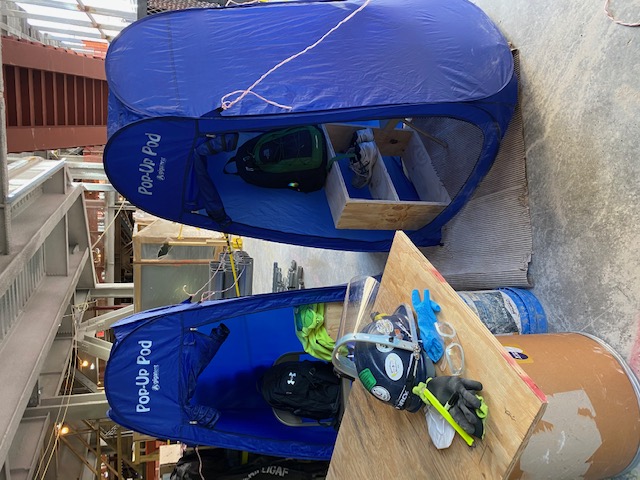August 2, 2020
Essential Work Must Continue
Loveen Manocha
The coronavirus pandemic has abruptly brought the lives of many to a halt. The various measures put in place to curb the spread of the virus are purposeful and the intent behind them is good, but they are misdirected. For example, 100% of the non-essential workforce has been ordered to stay home so that the apex of infections could be brought down. Only essential work is allowed to continue, but the definition of what is essential is being narrowed in every subsequent government mandate1. Originally, all construction projects were considered essential. More recently, however, only construction related to roads, bridges, transit, healthcare facilities, affordable housing and homeless shelters is deemed essential enough to carry on. When we think about essential workers, especially in the context of a disease outbreak, healthcare workers on the front lines may come to mind first. Electrical workers and other skilled tradesmen, however, are just as essential to the infrastructure that is needed for an adequate response to a pandemic and its aftermath. In this essay, I will explain why it is imperative that all types of housing construction, as well as that of schools and houses of worship continue.
How can we shelter in place without any shelter? Not only affordable housing, but all types of housing development should be allowed to continue as essential construction. Looked at from a supply and demand perspective, the more housing units that are available means more affordable rents and therefore more roofs over people’s heads in this difficult time. It is much more difficult or even impossible for a person to practice good hygiene, like hand washing, or follow a medication regimen if they do not have a home. Even homeless shelters are notorious for substandard accommodations where people live and sleep in close quarters. This makes them excellent breeding grounds for all kinds of communicable diseases including the novel coronavirus. It would be utterly inhumane for a person who is homeless or on the brink of homelessness to not have an opportunity to procure an apartment due to an ever-existing NYC housing shortage, made worse by the construction shutdown. If the freeze on construction continues along with the pause imposed on other non-essential businesses, which can last for months, the housing problem will only be compounded. Remember, even though a project may not be labeled as “affordable housing”, it does not necessarily mean that it’s a construction project of multimillion-dollar residences. There are a vast number of private housing projects in the boroughs meant to serve the communities they are located in.
Furthermore, the construction of schools and houses of worship should also be exempt from the construction shutdown. Recently, due to the New York State on PAUSE executive order, the construction of a public-school building where I was employed was shut down and I was laid off. However, this is counterintuitive because just as we are ramping up preparation for the onslaught of COVID-19 patients as we approach the apex of this pandemic, we also need to prepare for the 1.1 million students in NYC to eventually return to school. We are recruiting professionals and securing supplies now because it is not good practice to begin preparation after the battle horns go off.
Similarly, construction of city schools needs to be resumed so that the students have decent schools to attend when this is all over. Construction on houses of worship like the temple that I attend has also been suspended due to this broadened definition of non-essential construction. Thus far, prayer and meditation sessions at my temple have been most effective in relieving the anxiety brought on by the uncertainty of our new reality. Houses of worship can remain open as long as social distancing is practiced and the compliance in NYC has been overwhelming, then why not allow the completion of construction at these places?
Some have argued that constructions sites are unsanitary, but that is where the use of PPE’s that trade unions historically fought so hard for comes into play. There are strict guidelines already in place, such as OSHA, that have tailored solutions to any kind of safety concern including occupational exposure to pathogens. We are required to use gloves, eye and face protection, and respiratory protection if necessary. Furthermore, employers are required to provide places of employment which are free from health hazards. At my new jobsite in a transit facility, in overwhelming compliance with these guidelines, crews equipped with bleach spray make multiple rounds of the jobsite and disinfect commonly touched surfaces. This model could and would be applied to the construction of housing, schools, and places of worship as well. Union members have spent their blood and sweat to establish safe work environments and the use of PPE’s for future generations of workers. Why not let these workers earn a living for their families while they keep building America with these safeguards in place?
[1] Mosendz, Polly. “Are You an 'Essential' Worker?” Bloomberg.com, Bloomberg, 8 Apr. 2020, www.bloomberg.com/news/features/2020-04-09/are-you-an-essential-worker-in-the-pandemic-that-depends.

Pop Up Pods
Yesenia Montesdeoco